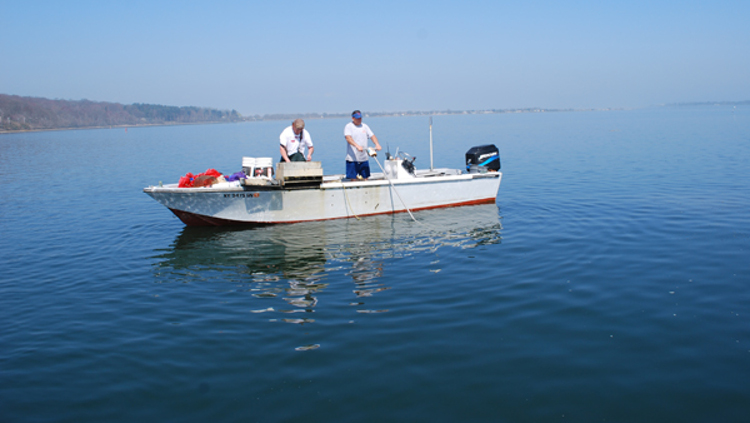This summer an important environmental study of Long Island Sound came out that could—and should—play a vital role in its preservation and provide a model for protecting other estuaries around the world. The findings surprised even the scientists working on the research, myself included. They underscore the remarkable opportunities and challenges affecting the Sound.
I’ve studied estuaries throughout the nation and around the world, and Long Island Sound’s uniqueness not only makes it special but protects it in ways that should be more widely understood. In every other estuary—those places where freshwater meets saltwater—the head of the estuary is where the flow of freshwater is concentrated. With the Sound, the largest flow of freshwater is not at the head, New York City, but on the side near the eastern end, where the Connecticut River—the longest river in New England—discharges its waters between Old Saybrook and Old Lyme.
What makes the Sound even more remarkable is that on its western end is one of the world’s most important megacities, and on its eastern end is “The Race,” where the tide races into Long Island Sound from Block Island Sound. Also notable are the contrasts between the shores of Long Island and Connecticut. Long Island is essentially a glacially deposited sandbar, while Connecticut is composed of rocky headlands divided by a series of rivers.
Those differences, plus the shared dependence on the Sound, made it crucial to have organizations and individuals from both sides of the Sound engaged in the research—through funders, agencies collecting data and citizen scientists.
The Long Island Sound Report Card was funded by the Long Island Sound Funders Collaborative and created by the University of Maryland Center for Environmental Science, where I oversaw the scientific synthesis. It is the result of collaboration—not only among funders but among scientific organizations on both shores of the Sound and among academic researchers and citizen scientists. That process and the report’s findings offer great hope for the Sound, which is unlike any other estuary in the world and yet can provide a reporting model for others.
The Long Island Sound Funders Collaborative consists of a dozen foundations based on Long Island, in Connecticut and New York City, and beyond, convened initially by the National Fish and Wildlife Foundation. The LI-based foundations are the Long Island Community Foundation, New York Community Bank Foundation and the Rauch Foundation.
Data was collected by agencies of both states as well as by the Interstate Environmental Commission and the federal government. The citizen scientists collected data on two geographic areas of particular focus: Inner Hempstead Harbor and Norwalk Harbor.
We worked to build a consensus, so the report would reflect broad agreement on key findings and, therefore, convey an especially powerful and objective conclusion. What the report found was that “there is a variation from west to east of unhealthy (F) to healthy water quality (A). The Western Narrows is affected by the highly populated, suburban-urban communities surrounding New York City and scored the worst. Moving east from western Connecticut and western Long Island, the water quality improves. In the eastern Sound, the pollution is diluted by exchange with the Atlantic Ocean.”
What surprised us is how quickly the water quality improves as you move from west to east. Before you even lose sight of the Manhattan skyline, the pollution has started to dissipate. That’s because of the input of freshwater along the Connecticut coast and the power of The Race. Together they flush the Sound intensively, leaving its eastern end in amazingly good shape.
There’s still a lot of work ahead to improve and protect the Sound, but these findings provide reason for hope and optimism. The Sound still faces many significant challenges, but they have changed in recent decades.
The Clean Water Act of 1972 and the Clean Air Act, passed in 1970 and subsequently amended, have reduced the pollution coming out of pipes: car exhausts, smokestacks, and sewers. Now we need to make progress on more diffuse sources, especially runoff from streets and other hard surfaces, residential landscapes and agriculture.
Long Island soil is very sandy, and water flows readily through it, carrying toxics from septic systems and agriculture. Septic systems clean up household waste but do not remove nutrients, like excessive nitrogen, which cause pollution.
New York City needs to focus more on the runoff associated with both storm water and rainwater. The hardening of urban surfaces makes it very easy for runoff to reach the Sound.
Connecticut faces challenges reflecting its coastal mix of cities and towns. Its shore also has a huge industrial legacy from past manufacturing that is disturbed when storms disrupt underwater sediment.
The Long Island Sound Report Card offers a collaborative model and a set of findings that enable the tracking of combined efforts at conservation. In doing so, it adds significant value to other crucial environmental work being conducted around the Sound. It also provides a basis for collective improvement of one of the best-known estuaries in the world and could become a model for enhancing estuaries affected by the growth of 21st-century megacities.
William Dennison is Vice President for Science Applications and Professor at the University of Maryland Center for Environmental Science.

































